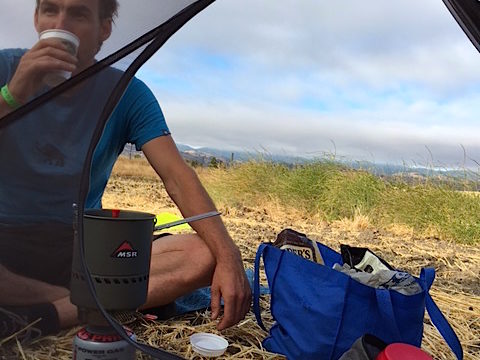
Climbing and Injury
I am inspired by what I’ve read from your site! I live in Alaska and am getting a degree in resource management, but all I really want from life is to live simply with my two dogs, Rin and Rico, husky and lab. I started climbing my freshman year of college and I love it! I also enjoy biking, hiking, and everything outdoors.
My question is also a concern. I really love climbing, but I have also had a lot of trouble with injuries. Two years ago I went on a bike tour from Alaska to Bishop, California, to go rock climbing. The summer before the trip I tore a muscle in my shoulder that did not heal quite right. It continued to bother me while I climbed and caused me to leave Bishop early. When I returned to Alaska a few months later, I was climbing in the gym and my wrist began to bug me. That was the start of a year long ordeal with tendon problems. I have since healed to the point that I can now climb frequently, but I am afraid of re-injury. Have you ever been injured? Do you have a method for dealing with injuries? Do you have things that you do everyday to prevent injury?
Thank you for taking the time to talk with me
Sincerely,
Lin
Hi Lin (and Rin and Rico),
Thanks for writing! I have never been injured climbing, but when I was in my twenties and started climbing in gyms, I would feel some soreness around my ring fingers that made me nervous. I think there are a few prevention things you can do–first and foremost is hydration. If you wake up and start your day with coffee and then drink when you feel thirsty, you will not be super-hydrated. I don’t drink coffee every morning anymore, but when I did I would always make a double-size cup of ginger tea at the same time I made a small cup of coffee, and follow the coffee with the whole cup of herbal tea. Coffee is a diuretic, so if you chase it with twice as much liquid, I think you cover your bases. As the day goes on, you need to pound water even if you don’t feel thirsty. Usually when you feel thirsty, you’re already dehydrated. Staying on top of hydration is going to make your tendons, tissues and muscles very happy, and I think it’s really helpful for injury prevention. Sometimes I call hydration a full-time job–and if you’re exercising (like riding a bike from Alaska to California), it really is going to be a full-time job because you need even more water to be ultra hydrated.
Also, take warming up very seriously. I’ve noticed in France that climbers will warm up for a really long time, sometimes hours! Often we show up somewhere without much time and we want to charge right in and start crushing. In a really ideal world, you’d climb a pitch that’s very easy for you, just to start moving your joints and breathing, and maybe even 2 like this. Then you’d climb something a little harder, where you have to engage your fingers and muscles a little and use your brain, but not get pumped at all (maybe even 2 like this). Then you’d climb something that gets you a little pumped. Then you’d climb something that gets you very pumped, but not hard enough that you’re maxing out to finish the pitch. At that point, you can get on things that are harder for you. Not every crag is set up with enough selection of routes to let you do this, and you don’t always have enough time either. If you’re climbing at a place where there aren’t great warmup options, start by bouldering around at the base or see if you can find a way to get some topropes or go bolt-to-bolt on a route. You want to hang at the very first sign of pulling too hard during the warmup process. Sometimes people don’t want to hang for whatever reason, but if you push too hard too fast you’ll either get too pumped and not be able to keep climbing much more, or risk injury. I have a friend who keeps Therabands in his pack, and he always does shoulder exercises before climbing at all (you can usually buy these at Walmart). There’s also Awesome Woody’s, a great portable hangboard that can hang from a single clip point, and this can offer some great warmup possibilities too.
If you feel like you’re in a phase where injury is a potential, dial it way back when you go climbing. A friend of mine who was a European world champion told me that when she’s starting back into climbing after injury or a break, she will climb nothing harder than her stretching/warmup grade when she goes climbing, and she does that sometimes for up to a month before she will get on anything that she has to really try on.
Last but not least, make friends with yoga. Even the simplest downward dog stretch is doing way more than it seems like for your fingers, forearms, hands, shoulders and ankles. Just give it a few minutes a day. Even if all you do are some sun salutations, you’ll be increasing your chances of keeping everything open and resilient.
🙂 Steph








Great advice, but if I may add.
Avoid high volume low intensity climbing in the gym and take rests of 10-15 minutes before burns on a route.
And also realize that one needs to train the ‘push’ muscles as hard as the ‘pull’ muscles to remain balanced and injury free.
Engage crush mode…….
A.